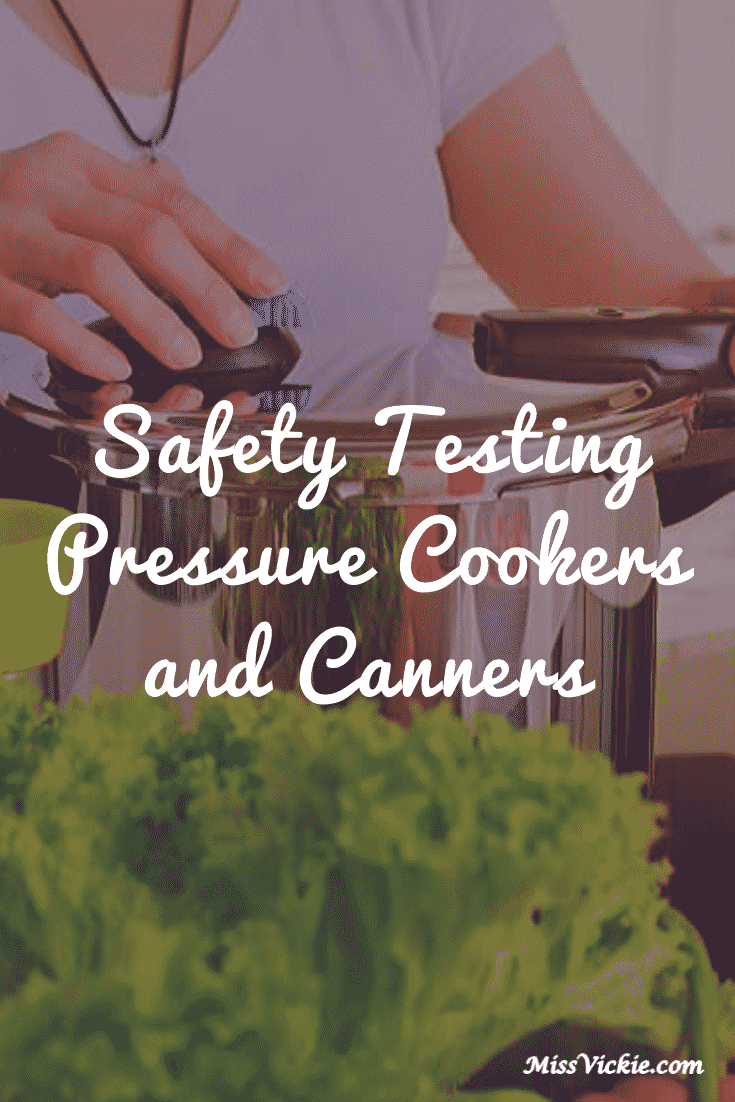
Pressure canning is the only safe method recommended for canning low acid foods such as seafood, meat, poultry, and veggies. Boiling water canners are reserved for high acid foods that are capable of killing botulism-causing bacteria at the temperature of boiling water.
But because low acid foods do not have the acidic environment to make this happen, they must rely on a pressure canner, which is the only equipment capable of producing the high temperatures that destroy food spoiling organisms. Home pressure canners process low acid food at temperatures of 240°F.
Safety Testing Pressure Cookers and Canners
At sea level, weighted gauge canners that are operated at ten pounds pressure per square inch supply an internal temperature of 240°F. Higher pressures, alternatively, are required at altitudes above sea level in order for 240°F to be attained. At 240°F, the bacteria in low acid foods require about 2 to 160 minutes to be destroyed. However, the exact time will be impacted by the type of food being preserved, the manner in which it has been packed, as well as the size of the jar containing the food items.
Safety testing pressure canners
Pressure canners are vital pieces of equipment when it comes to canning low acid foods. Ensuring that your pressure canner is working properly is something that should be taken very seriously. If the components and parts of the pressure canner are not working effectively, the safety of the food being canned could be put in jeopardy.
Testing pressure canner gauges
Before you start the process of preservation, the pressure canner gauge must be tested for accuracy. Inaccurate readings of the pressure canner gauge can cause a host of health problems due to food safety risks, as well as lead to damaged equipment and a whole range of issues.
Therefore, to avoid any problems from arising, you should always make sure that the dial gauge of the pressure canner is registering correctly and that all the parts of have been checked for proper functioning. According to the USDA, dial gauges should always be replaced if they record a high or low reading by more than 2 pounds at five, ten or fifteen pounds of pressure.
If a gauge records 2 pounds more or less than the actual pressure in the pot, this indicates that the gauge is damaged, in which case repair should be done before any canning can commence.
There are generally two types of pressure canners; those that come with weighted gauges and those that come with a dial gauge. The weighted gauges typically shake to indicate that pressure has been reached while those with dial gauges work by recording the amount of pressure in the canner.
Pressure canners that come with weighted-gauges, instead of dial gauges do not have to be tested before the canning process is done. These types of gauges are designed to maintain their accuracy.
Old pressure canners that have been passed down must also always be tested to check whether calibration is needed and to ensure that the gauge is working properly. second-hand pressure canners, that are often prone to cracks, dents, and missing components must also be tested to guarantee that they are operating as intended.